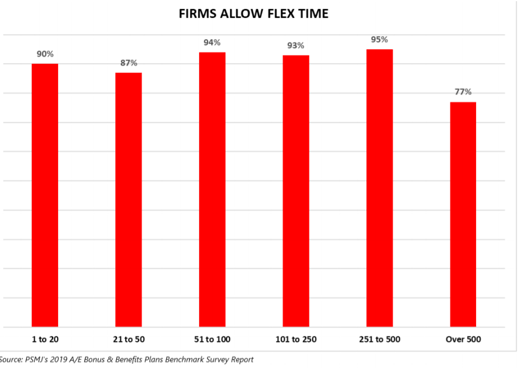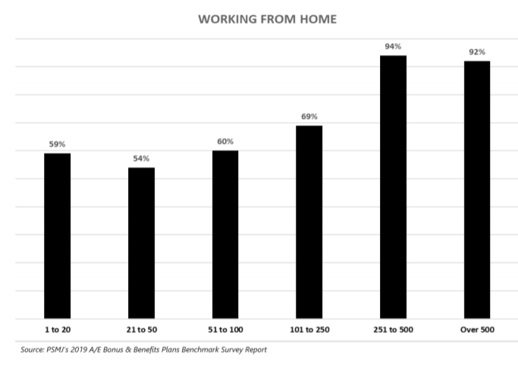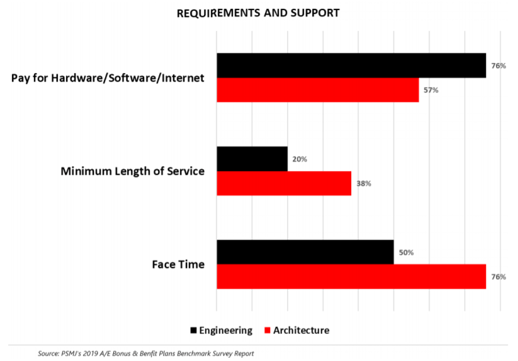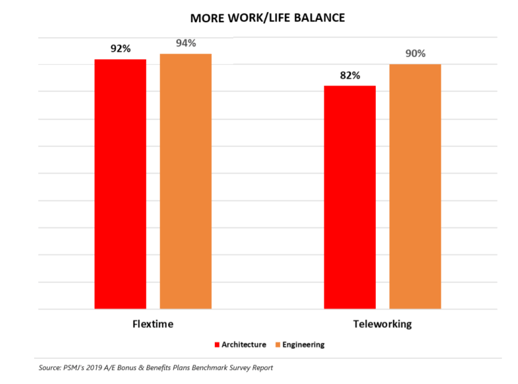Before COVID-19, nearly 90 percent of firms reported that they allowed at least some staff to work from home. That is the good news. However reluctantly, engineering, architecture, and construction management firms across the United States and Canada were somewhat ready to ramp up their teleworking efforts.
PSMJ’s Dave Burstein admits that firms were slow to the teleworking dance, and were more apt to offer flexible hours policies to satisfy staff ’s needs to balance home and work. “We found that nearly all firms were embracing flexible hours,” he explains, and while some staff worked from home—it was not the norm. And those who did may have had to meet such requirements as minimum length of service or be a part of upper management.
BEING FLEXIBLE
“What we find is that firms had embraced core hours— in large numbers,” explains Burstein, “even before COVID-19.” In fact, according to PSMJ’s 2019 Bonus & Benefit Plans Benchmark Survey Report it was only the largest firms that—across the board—do not allow staff more flexibility as to when people are in the office. And even the large firms (with over 500 staff members) allow such flexibility with 77 percent allowing staff to decide their own schedules and only asking that people show up for set core hours (usually nine to five).

For safety and health, these numbers have changed and nearly everyone is getting their work done outside the office, Burstein says. “The percentage of people working at home will not stay at the inflated numbers that we have now,” he explains, but he says that post-COVID-19 numbers will be higher than what PSMJ found for 2019.
“Firms will learn that staff are productive and can work—at least for a short time—from outside the office,” Burstein says. The only missing piece is for firms to decide the policies that cover office coverage and working away from the office.

MORE STANDARDS
Many A/E firms had to rush to allow all staff members to work from home during the COVID-19 outbreak. Most did not have time to put requirements in place or make decisions regarding expensing the cost of teleworking.

“Some firms have made decisions about who and how staff will work from home,” Burstein explains. He gives the following as just a few of the important considerations:
• Repayment for phone use
• Reimbursement for internet access
• Minimum length of service to work from home
• How many hours staff must work in the office
• How often must staff touch base while working outside the office

Once the United States and Canada come through current events, firm leadership will have to face the fact that teleworking and office hours will need to change. Burstein suggests firms consider lessons learned and what will be needed to complete the work of the future.
 PSMJ's A/E Strategic Planning Study is available for purchase or as a free download to PSMJ members.
PSMJ's A/E Strategic Planning Study is available for purchase or as a free download to PSMJ members.



